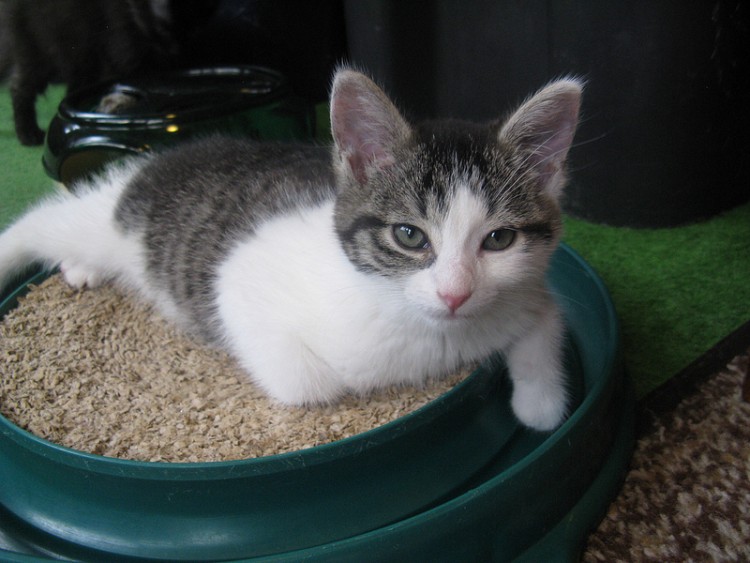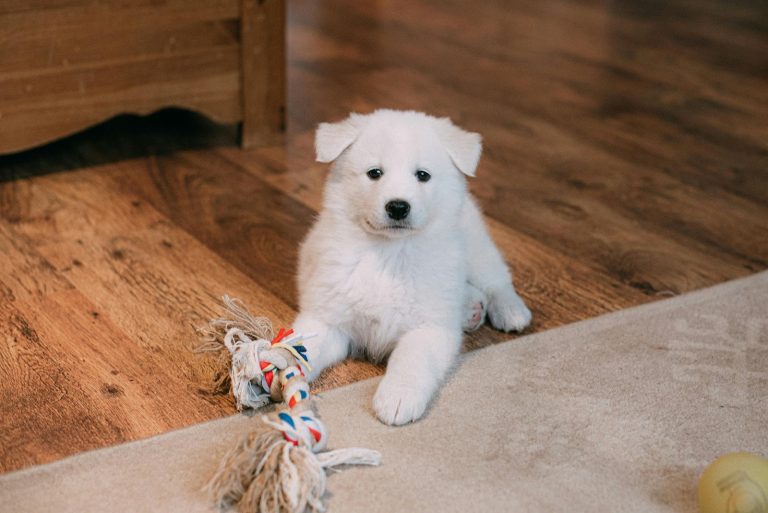5 Shortcuts for Litter Training Your Kitten in Record Time
If your kitten hasn’t learned from Mom the finer points of using a litter box, you can help with these steps.

You never have to teach kittens to use the litter box, I’d tell people. The mom cats take care of that.
And I’d back up my argument with stories about how my Dawnie used to walk kittens — her own and others — to the litter box. Or how Phoebe would show the foster kittens how to cover up after themselves.
Well, I’ve come to find out that I wasn’t absolutely right.
Not all kittens are quick studies, and not all mother cats make a point of putting them through litter box maneuvers. In fact, Dawnie and Phoebe were overachievers in that respect.
I currently have 3 kittens and their mom in my study. She looks after them with great tenderness, but she is also indifferent about whether they ever figure out what that purply pink plastic box is for.

Don’t leave your pet’s safety to chance
Sign up for Petful recall alerts today.

Early (Non) Training
“Cats do not come into this world knowing how to use a litter box,” observe Elizabeth Teal and Micky Niego of the ASPCA. “Cats learn what and where the ‘bathroom’ is from their mom at about 4 weeks of age.”
So the kittens watch and imitate mom. Their training “can happen so quickly that the casual observer may be unaware that any active instruction has taken place.”
The word “active” is key. Some mother cats are indeed more active than others.
Or, as Teal and Niego point out, a kitten born outdoors may learn to regard “a clump of leaves or soft garden earth as the bathroom. Imprinted on that texture, recently homed feral and stray cats may have to be actively trained to use a box filled with clay litter.”

How to Encourage Litter Box Use
Here are a few things you can do to help your kitten along:
1. Fencing In
Use a modified variation of the crate principle:
- First, section off part of the room.
- Then place the litter box, bedding, dishes and toys in there and add kittens.
This forces them to use the litter box, explains Susan Graham of Aksum Abyssinians.
Still, there may be setbacks along the way, especially as the kittens get used to new foods. So stock up on paper towels, cleaners and patience.
(By the way, Lysol may kill germs, but it can be poisonous, especially to a tiny animal. Go nontoxic.)
2. Litter Matters
Your kitten should be comfortable when using the litter box.
Foster & Smith advises using a litter “that has the consistency of beach sand or garden soil” and that is unscented.
Sometimes, young kittens eat bits of cat litter, which can lead to dangerous blockages. For this reason, Graham recommends using the corn-based World’s Best Cat Litter. They might still eat it, but it won’t harm them the way the clay litter will.
A cheaper alternative when litter training your kitten is chicken “crumbles” or feed. It, too, is corn-based and you can find it at feed stores.
Watch these adorable kitties quickly learn how to properly use a litter box for the first time:

3. Less Is More…
…except when it comes to litter boxes.
Once the kittens leave their enclosure, be sure to have more than 1 litter box around. If your house has more than 1 floor, have at least 1 litter box per floor. Place the boxes in quiet, private places.
And don’t fill the boxes to the top; a couple of inches of litter should more than do the trick.
4. Going Through the Motions
If you are the mom cat by default, this means placing the kitten in the litter box upon waking or after his meals.
You then gently take his paw in your hand and show him how to properly hide the evidence.
“The kitten should get the idea from doing this,” according to Cats of Australia. “If this doesn’t work, scratch at the litter with your fingers. Try to make it look like a fun game so you attract his interest.”
5. A Little Help From the Doctor…
…or from Dr. Elsey’s Precious Cat Ultra Litter Attractant, to be exact. A little goes a long way, and it draws the kittens to the litter box like a magnet.
In a few weeks, my kitten friends will go to their forever homes. They are healthy, well socialized and utter charmers.
And they’ve got that litter-box thing down pat.

Litter Box Training a Kitten: 5 Tips You Need Now
Here are a few more quick tips so you and your kitten come through litter box training like champs.
1. Size Matters
Make sure your kitten’s litter box is the right size for him.
Too-small litter boxes make both cats and kittens feel confined, and feeling trapped may discourage your kitten from using the box.
In her book First Steps with Puppies and Kittens, Linda White explains proper sizing: “Each litter box should be large enough for the kitten to feel comfortable. A good rule is to use a litter box 3 times the length of the kitten from nose to tail.”
Younger cats and kittens also need a litter box that has lower sides to facilitate getting in and out easily.
As he grows, replace his “kiddie box” with a more standard adult-sized version — and it’s worthwhile to do this before he becomes uncomfortable with its size and refuses to use it.
2. Know Where to Put the Litter Box
Where you place your kitten’s litter box is important.
Just like us, he would like a little privacy during elimination, so place the box out of the way of people traffic.
At the same time, ensure that your kitten’s box is in a place that offers him some different ways to get the heck out of there, if possible.
Cats are cautious creatures and, as White says, “Your kitten will not want to feel trapped. So the area containing the litter box should have a few escape routes for the cat if startled.”

3. A Room of His Own
Most cats prefer not to share litter boxes.
In a multi-cat household, it’s best to always have 1 more litter box than you do cats. So if you have 1 cat, get 2 boxes, and so on. Forcing a family of felines to all use 1 box may result in some undesirable outcomes, including:
- Urinating or defecating on the floor
- Dominance struggles
- Ambush-style attacks by other cats
The Humane Society of the United States also advises not placing all of the litter boxes in close proximity to one another — or else the cats will think of them as being “1 big box.”
4. Choose the Best Litter for Your Cat
Some kittens will use any litter you buy, but others are more finicky and will prefer a certain type.
“Since many kittens naturally look for soft matter, such as sand, to eliminate in, they seem to prefer softer litters that clump. Other kittens may like smooth surfaces to eliminate on,” says White.
Offer your kitten a choice: Have a couple of boxes available with different types of litter and see which one he uses more.
Using his preferred litter type from the beginning will make the rest of his training much easier.
This mama cat has a frustrating time showing her kitty what a litter box is really for:

5. Use the Right Amount of Litter
Litter depth preferences will vary from kitten to kitten, so this gives you the chance to run more tests in the kitten litter lab:
- In one of your litter boxes, pour only 1 to 2 inches of litter.
- In another box, put down at least 3 to 4 inches of the stuff.
Then step back and observe your kitten’s behavior. Which does he use more?
The most important things you can bring to the table when litter box training are patience and love. Cats and kittens instinctively want to bury their waste, so you’ve already got the advantage — the trick is to keep it!
Watch your kitten carefully to see what he prefers, and do your best to nip any elimination issues in the bud.
And don’t worry: It takes us months to potty-train our little humans, but your kitten will have it down pat in no time.
* * *
Melissa Smith contributed to this article.







